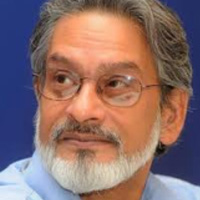Ashok Kotwal, Editor-in-Chief, Ideas for India, interviews Pronab Sen on the recent poverty figures that show a steep decline in poverty in India between 2004 and 2011. According to him, the shift in terms of trade in favour of agriculture and higher rural wages accelerated the trickle down of the fast economic growth to the poor.
The poverty figures for 2011-2012 have shown a steep decline since 2004-2005. What do you think is responsible for this?
Several factors: the growth acceleration certainly was a major factor, but it would not have had this kind of impact if two other developments had not occurred. The first is that there was a terms of trade shift in favour of agriculture, which began in 2004 and continued to gain strength thereafter. Over the period, my rough estimate is that the terms of trade improvement added somewhere between 3 to 4 percentage points annually to real agricultural income growth. The second is that rural wages rose rapidly, indeed faster than agricultural prices, which led to a distributional shift away from land owners towards landless labour. As a result of these two factors, the high GDP growth rate “trickled down” to the poor, especially the rural poor, much faster and to a larger extent than would have been the case otherwise.
The genesis of the terms of trade shift appears to be the large increase in minimum support prices by the UPA government, but its continuation, and indeed acceleration, is a more complex story. The distributional changes certainly increased the marginal propensity to consume of the country as a whole, but also appeared to have triggered off an unprecedented change in dietary patterns. The demand for non-cereal foods has increased faster than anyone had predicted over the last nine years, and the supply response, though significant, has not been able to keep up with demand. This has received some recognition during the past two years in popular discourse as “protein inflation”, but it is much broader and of longer duration than that.
The rural wage increases, I believe, are due substantially to the implementation and roll-out of Mahatma Gandhi National Rural Employment Guarantee Scheme (MNREGA) since 2006, but other factors have also played a part. In particular, the rural roads programme -- Pradhan Mantri Gram Sadak Yojana (PMGSY) has opened up rural work opportunities which simply did not exist earlier. That said, the role of MNREGA in rural wage setting processes, and more broadly in rural labour relations, cannot be understated.
This is a very interesting story. But how can MNREGA - a scheme known for hardly being operational in most states - bring about redistribution within the agricultural sector from farmers to workers?
It is not just about farmers to labour, but about rural employers in general to workers. MNREGA provides for the first time a reservation wage to the rural labour force, which they can use to bargain with their potential employers.
How can the MNREGA wage become a reservation wage when MNREGA schemes are mostly offered in the slack season? And also, we know that the demand from workers in many states is simply non-existent so it is hard to imagine that workers can band together to collectively demand higher wages for farm work.
There is a difference between work being offered and work taking place. It is correct that most MNREGA work actually takes place during the slack season, but that is an ex-post outcome rather than a design feature of the scheme. By the Act, workers can demand work at any time they want, and if 15 or more persons collectively demand MNREGA work, then it has to be provided. Thus, there is no reason why MNREGA cannot be used as an effective bargaining chip.
Could the poverty decline simply be explained by changes in the terms of trade rather than any further redistribution within the agriculture sector?
Of course not. One of the key results of the NSS Employment-Unemployment Surveys is the rapid expansion of non-agricultural work opportunities in rural areas since 1999-2000. The 2004-05 Economic Census shows the huge increase in rural non-agricultural enterprises that has taken place. The PMGSY has been a major contributor to this trend, and so has the micro-credit movement. I believe that this process will continue with more and more work options becoming available to landless labour in the non-agricultural Micro, Small and Medium Enterprises (MSME) sector. Nevertheless, agriculture still remains the dominant source of livelihood for a very large proportion of the rural work-force, especially the poorest and most unskilled. The terms of trade change and the MNREGA effect accelerated the process significantly.
How is this spectacular growth rate in the MSME output related to the terms of trade change in favour of agriculture?
The simple fact is that most of corporate India has not considered rural areas as a part of their key markets, except with a few exceptions like the FMCG and cement sectors. As a consequence, the upsurge in rural consumption demand triggered off by the terms of trade change was met primarily by the MSMEs, which were in any case focused on these markets.
Which, do you think, is the more effective channel for wage growth - employment created by MSME growth, or the increase in reservation wage on account of MNREGA schemes?
The story that I have sketched suggests that the two have been closely inter-twined during this past decade, and I do not think I am in a position to disentangle their separate effects. However, in a longer-term sustainable sense, growth in alternative productive employment opportunities is by the far the more desirable. Indeed, one needs to be careful about the MNREGA effect, since it has for the first time introduced inflation-indexation in rural India, which can lead to price instability in the country.
There are various stories floating around to explain the poverty decline. Some say it is on account of poverty alleviation schemes such as MNREGA, some say growth has trickled down. This story is slightly different. How can one sort out which of these makes most sense?
Through much more rigorous technical work than I have seen up to now. Too much of the discourse is based on either ideology or seat-of-the-pants analysis or casual empiricism. I am afraid that I too am guilty of all three.
If, in fact, changing terms of trade towards agriculture can bring about this desired effect, why don´t we just keep jacking it up?
Remember, the growth momentum came first, which permitted the initial terms of trade shock to be absorbed without much disruption. Remember also that almost all high growth strategies, from the Soviet Union to China, have relied on the exact reverse, which is to turn the terms of trade against agriculture. The theoretical underpinnings of this ‘squeeze agriculture’ strategy are well-developed, but there is as yet no theoretical basis to support my hypothesis. Consequently, the trade-offs cannot be rigorously appraised, which makes it unsuitable for recommending policy as yet.




 29 July, 2013
29 July, 2013 





Comments will be held for moderation. Your contact information will not be made public.